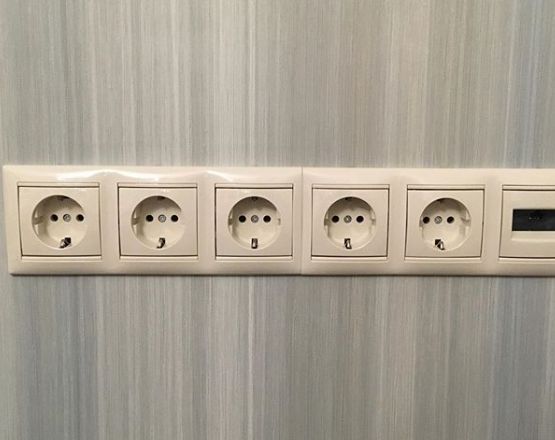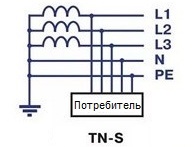Categories: Featured Articles » Electrician at home
Number of views: 10,719
Comments on the article: 1
Why TN-S is considered the safest
In comparison with such grounding systems like TN-C and TN-C-S, the TN-S grounding system is particularly reliable and safe. This system appeared and began to gain popularity back in the 40s, having received the first wide distribution in Europe, where to this day it continues to remain deservedly in demand.
In Russia, the TN-S grounding system is also being increasingly used, and year after year it is increasingly competing with other, less reliable, grounding systems, since it is considered to be the safest and highest-quality of all known approaches to grounding in consumer power networks, especially in residential buildings.
Despite the fact that the cost of installation TN-S systems more expensive than others (just because of the need to lay more expensive multicore cables), nevertheless, it is chosen on the basis of the requirement to ensure the greatest safety for people, which will be explained in detail below.

The bottom line is that single-phase and three-phase electrical networks actually always need three-wire and five-wire power cables, because ideally, in a single-phase network from the source to the consumer, three conductors (phase, neutral N and protective conductor PE) should be laid, and for three-phase network it will be five conductors (three phase - A, B, C, neutral N and protective conductor PE).

So, in the TN-S system, the main ground electrode is located at the transformer substation, and the N and PE conductors separated from each other in the cable stretch from it, from the substation itself - to the consumer, and there is no need to install additional grounding on the consumer side.
Thus, with the TN-S grounding system, the equipment at the consumer will always be maximally protected, and the person himself will be protected from electric shock difavtomaty and residual current circuit breakers, for installation and connection of which all the necessary conductors in one cable are immediately available. Moreover, the average person no longer has to regularly monitor the state of the ground loop at home. By the way, high-frequency interference from working vacuum cleaners and drills will not be afraid of power lines in such a grounding system.

Recall that the same outdated TN-C grounding system has combined PE and N conductors in one conductor - PEN, which puts people at risk of electric shock. One way or another, in order to ensure safety, the TN-C grounding system still has to be improved, although initially the TN-C system was resorted to for reasons of economy.
As a result, the TN-C grounding system is fundamentally inferior in quality and reliability to the TN-S system. Not for nothing PUE (paragraph 1.7.132) incites consumers to the need to categorically refuse to use the TN-C grounding system in favor of a more secure and reliable TN-S (or, in extreme cases, TN-C-S).

The TN-CS grounding system is slightly better than the TN-C, since it contains the separation of the neutral, grounding at the substation, PEN conductor into the neutral and protective (N and PE) conductors, however, the point of this separation is usually located on the input and distribution device of the building itself .
Thus, the obvious and key drawback of the TN-C-S system is that if the PEN conductor breaks due to insulation failure, a breakdown can occur on the body of the electrical device, which again puts a person at risk of electric shock. That is why the TN-S grounding system is considered the safest, where the protective conductor is reliably grounded and goes immediately in the cable along with all the other conductors.
See also:
The principles of operation of grounding systems for buildings TN-C and TN-C-S
What is the danger of self-grounding in the apartment (alteration TN-C to TN-C-S)
See also at bgv.electricianexp.com
:
